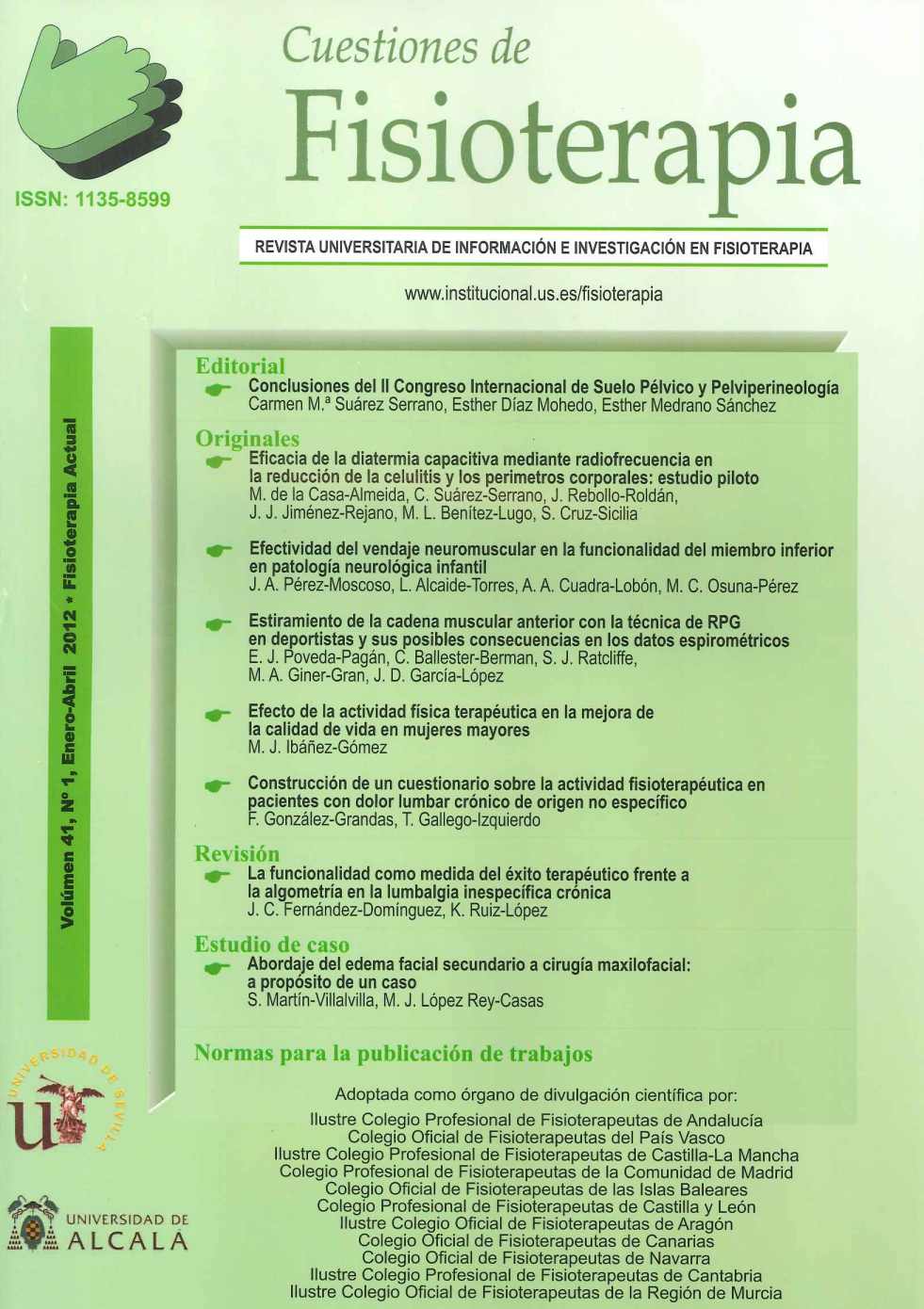Articles
Year 2015, Volume 44, Issue 1
Residual limb pain treatment in amputated patient with a mechanism based approach: a case report
Abstract
Introduction: amputation surgery can lead to both painful and non-painful situations occurring at least in 95 % of patients. Therapeutic options for residual limb pain (RLP) are those used for neuropathic pain, using a mechanism based approach. Objective: to describe a case of a patient with postamputation pain and to describe the major findings after treatment with an approach based on mechanisms. Case report: longitudinal experimental clinical case report of a patient with RLP five years after amputation, treated with mirror therapy and tactile discrimination training, assessment of pain and quantitative sensory evaluation tactile detection threshold and between two point detection threshold, were done. Results: clinically relevant reduction in pain (3 points VAS) and a decrease in both tactile detection threshold (1.01 von Frey Filaments) and between two points detection threshold (10 mm). Discussion: based on identified central and peripheral mechanisms that may be contributing to the patient's pain, although it is impossible to attribute specific effects to each technique, the treatment used has been effective in this patient.
Keywords: amputation stump, pain, neuralgia, somatosensory disorder.

